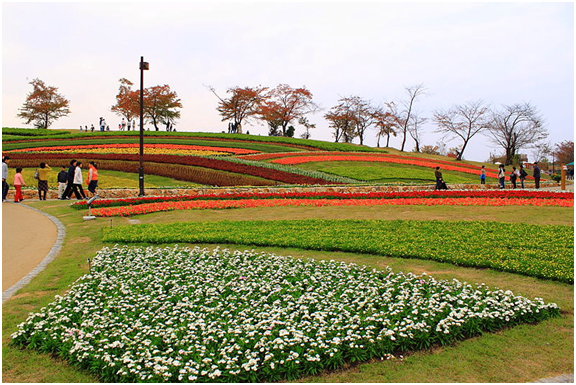During the nineteenth and twentieth centuries, cities across the US and the rest of the western world raced to industrialize. Factories sprang up out of nowhere and workers flowed in from the countryside, eager to be part of the new industrial world.
Cities like Detroit grew quickly, with busy city centers and acres of housing to accommodate all the new workers. Gleaming steel, concrete and tarmac were the future, with grass and trees redundant. It seemed like the new age of industrial prosperity would last forever.
Of course, hindsight is a wonderful thing.
Is the Urban Greening Movement a Flash in the Pan?
Looking back now, it seems obvious that it wouldn’t last forever. But new ideas and new futures are notoriously seductive; is the new future promised by urban greening any different?
Yes. Urban greening isn’t a new future; it’s just a way of grounding the present in the past. Some would argue that it should always have been so, but seeing past the promise of a better life for all that industrialization seemed to offer was difficult to see past. In a post-industrial Detroit, with its vacant lots and abandoned factories, that promise suddenly started to seem foolish. But the nature of the human spirit is that adverse circumstances provoke creative reactions, and that’s exactly what has happened in recent years in the city.
The disheveled urban environment that Detroit residents were left with when bankruptcy was declared last year is becoming useful again, promising a future much closer to the land from which we all came. Urban agriculture, green homes and green businesses are all part of that, and Detroit isn’t alone.
Throughout America (and in Europe), urbanites are beginning to look to new ways of living; ways to adapt the tough, concreted places in which they live and make them more whole, ways to make the buildings they live in sustainable.
As a planet, we have little future if we fail to recognize the need to live in harmony with the earth which gives us life. Some notable examples:
Green Rooftops
Green (or vegetated) roofs are a great way for cities to become greener. Big cities like Chicago and New York are increasingly finding ways to make their roofs more organic in nature, and there are numerous advantages to doing so.
Green roofs help absorb rainwater, so reducing run-off. They protect the hard roof underneath, helping to increase its lifespan. They have an insulating effect, keeping the building beneath warm in winter and so reducing energy use. They help keep the city cooler, because they reflect, rather than absorb heat, reducing the ‘urban heat island’ effect. They increase urban bio-diversity and encourage wildlife to flourish in the most unlikely of places. Above all, they simply make the city a brighter, more pleasant place to be.
Urban Food Production
Detroit isn’t the only city in which citizens are beginning to find ways to produce their own food. Rooftop greening can easily help create the conditions needed for urban agriculture, and rooftops are an obvious place to find space to grow. But any un-used space can be converted for urban agriculture, and so it becomes a fantastic way not only of producing food, but also of using blighted space. If the ground is unsuitable for growth, no problem – much can be done it tubs and pots. Bee keeping is another option that is gaining in popularity, and a great way to maintain a healthy urban ecosystem.
Plastic Waste Initiatives
Needless to say, plastic waste is a big blight on both our landscapes and oceans. While most municipalities have programs in place for treating unwanted plastic, most recycling efforts are limited at best. As a result, it is largely up to individuals to shoulder the burden by reducing our own dependency on plastic.
Some areas, however, are turning to a little-known process of Poly2Petro – that is, turning waste
plastic back into the oil which originally made it. While the technology is relatively new and not in widespread use in the US, some countries (such as India and the Netherlands) are starting to ingrain the process into communities to help solve both the problem of plastic pollution and a rising shortage of oil.
Eco-Districts
Some cities, including San Francisco and Portland, are considering introducing ‘eco-districts’: areas of the city designated as green zones.
The theory is simple: it’s much easier and more efficient to make a whole district green at once, than to leave it up to individual property owners. It allows the introduction of communal systems that help promote a more sustainable way of living. One of Portland’s proposed initiatives, for example, is for a community thermal system which would heat rain-water and ensure it got to those buildings that most needed it.
Even fairly simple initiatives such as introducing solar panels tend to be much easier and more effective if shared between several buildings, rather than one.










You must log in to post a comment.